We use cookies and other technologies to personalize your experience and collect analytics.
Remembering Childhood
Richard Aldrich
Richard Aldrich
Remembering Childhood
1 June – 13 July 2024
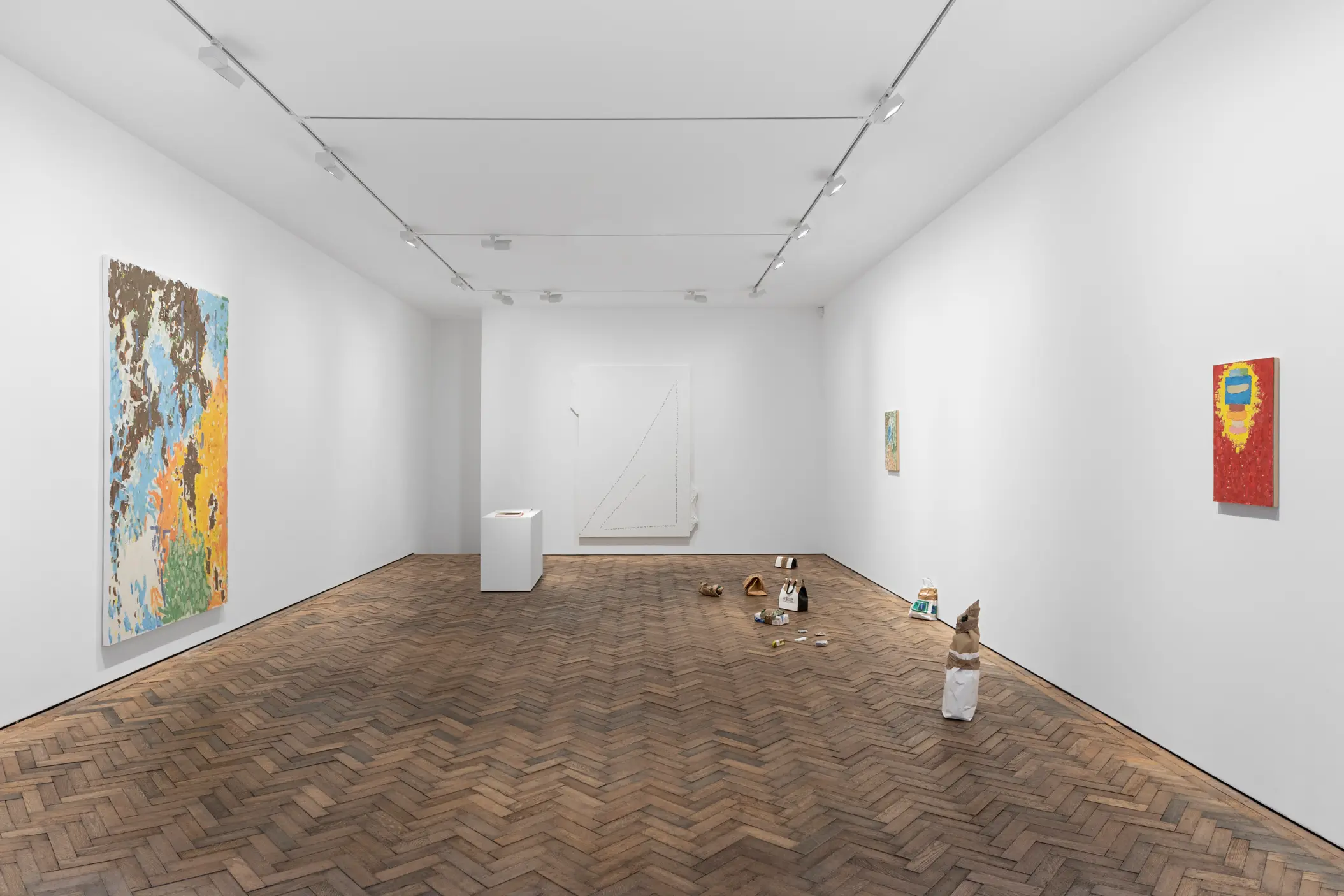
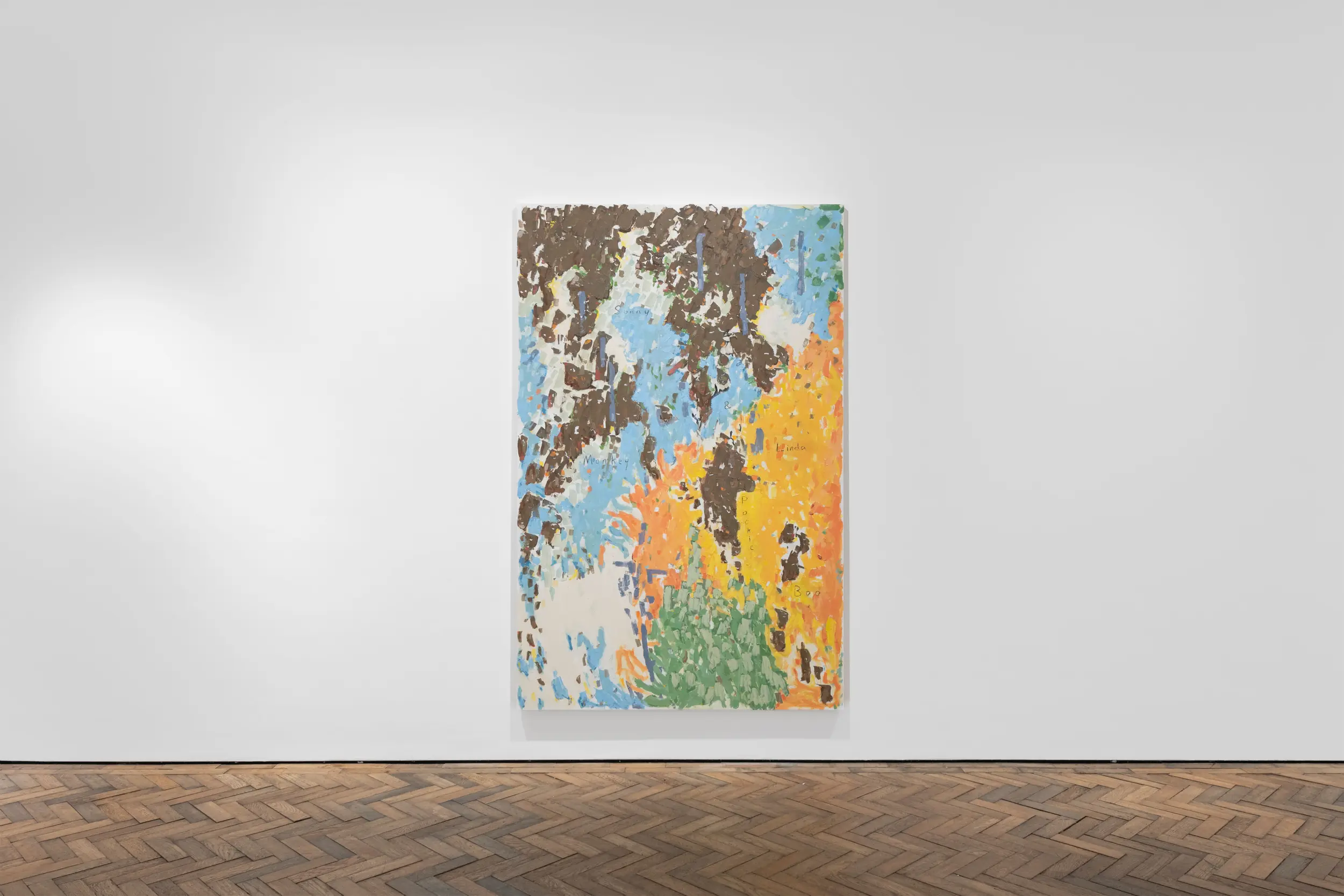
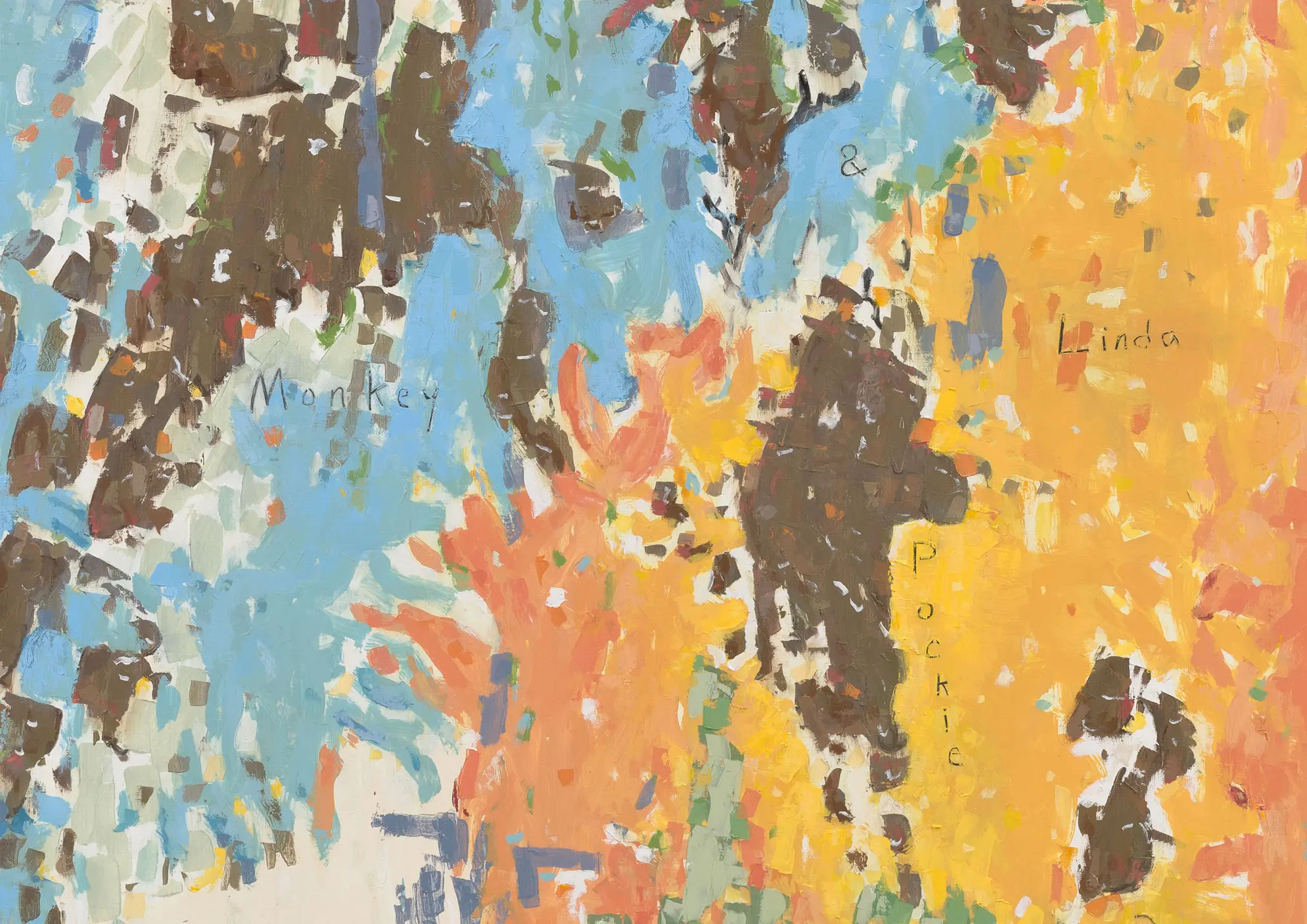
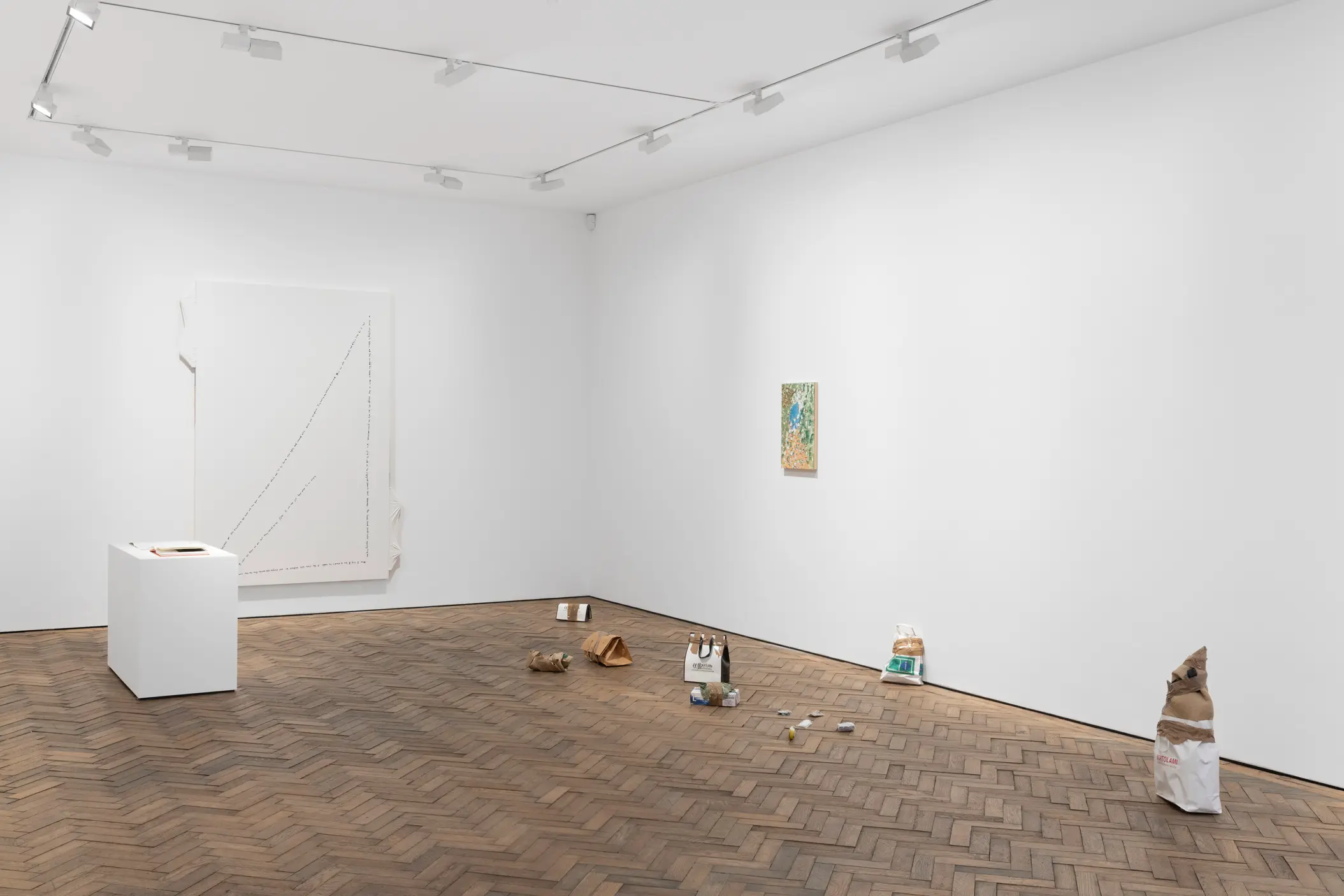
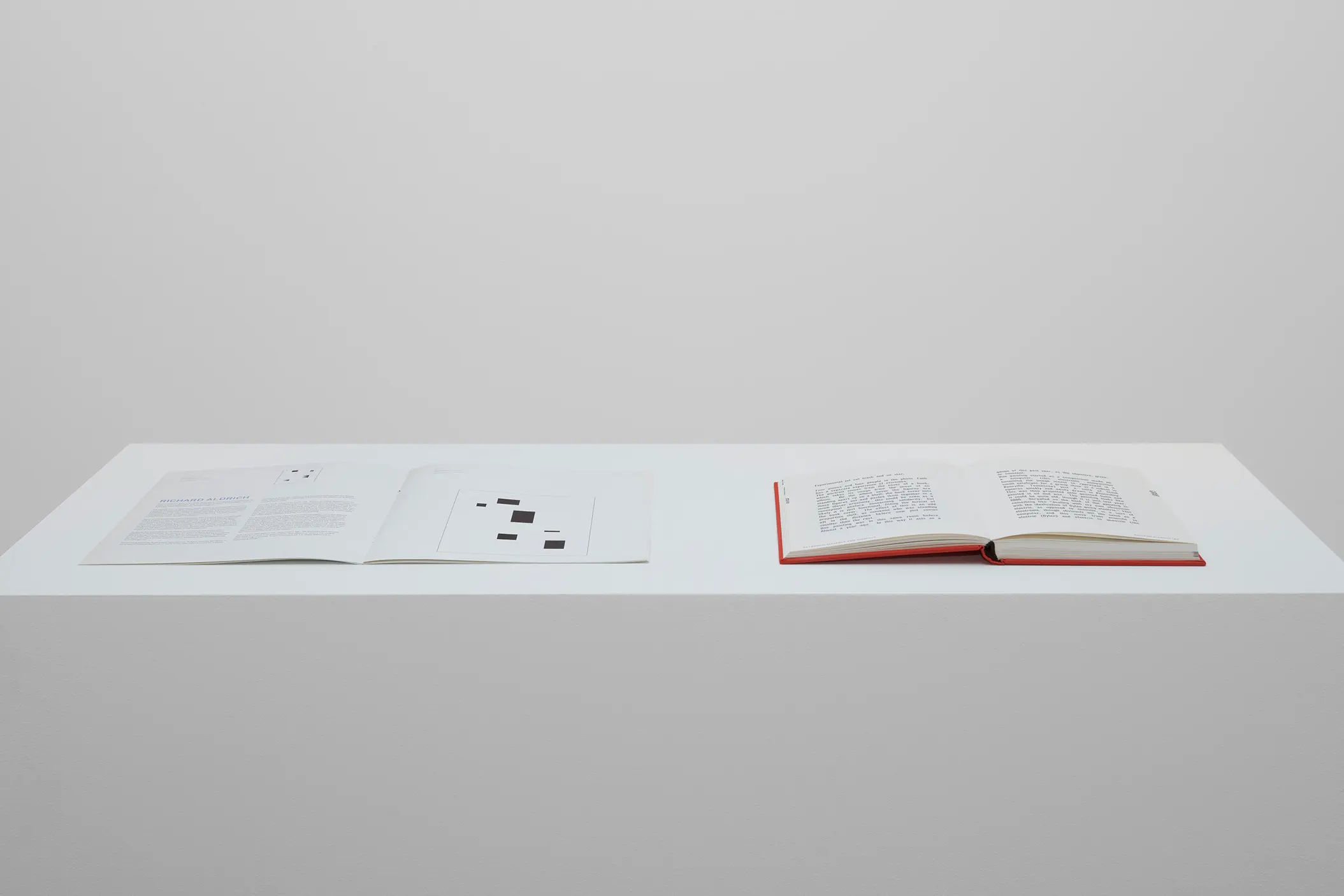
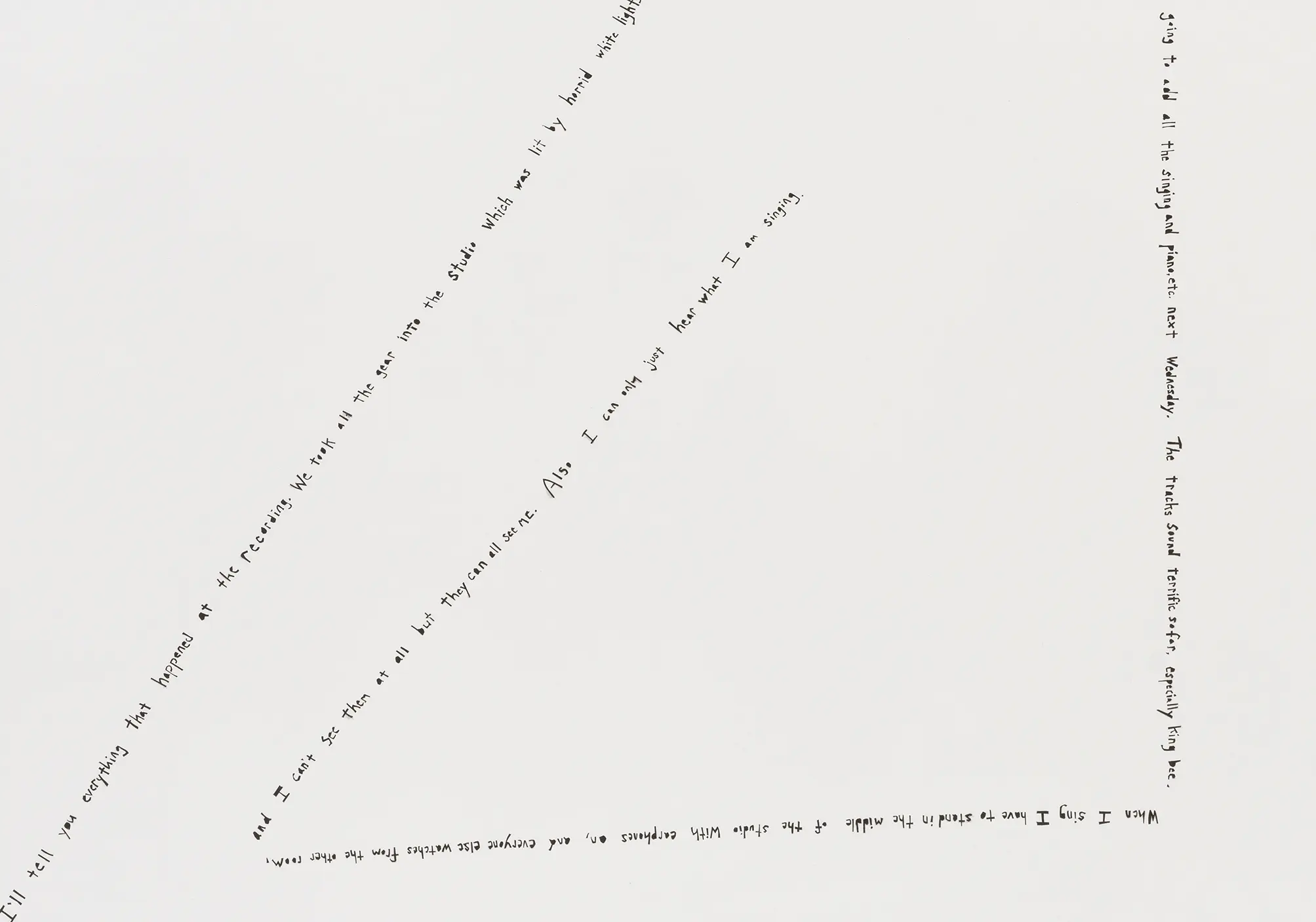
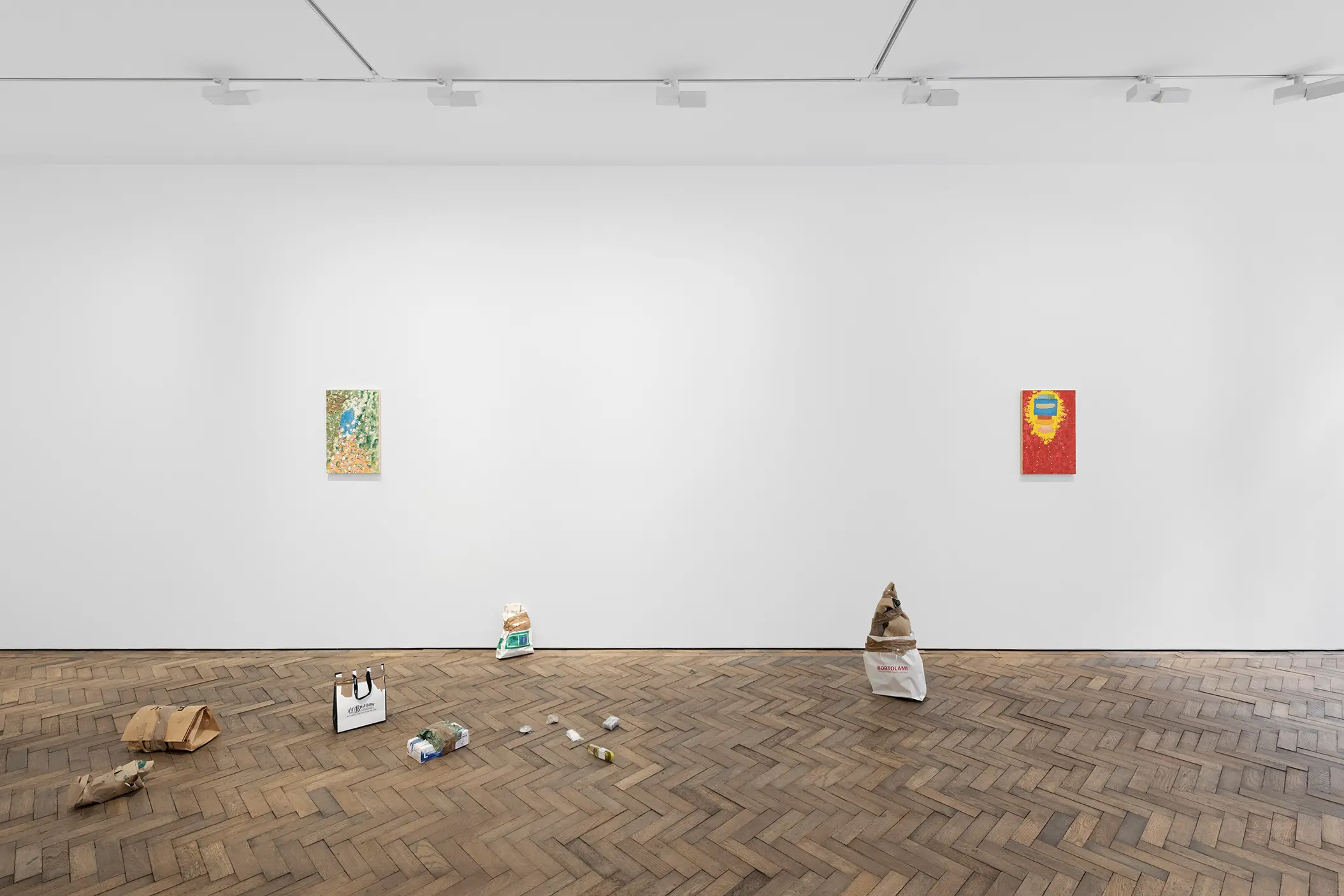
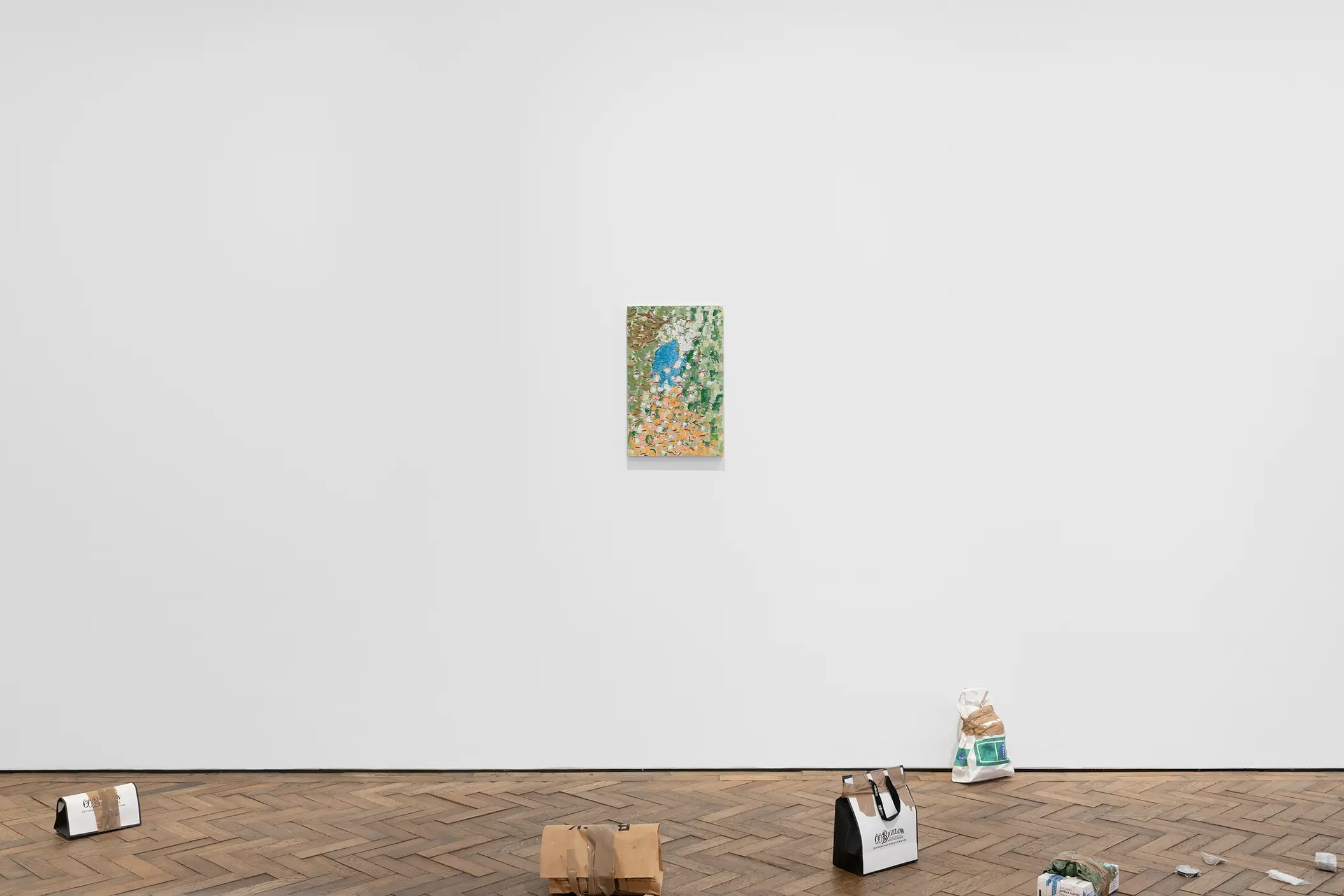
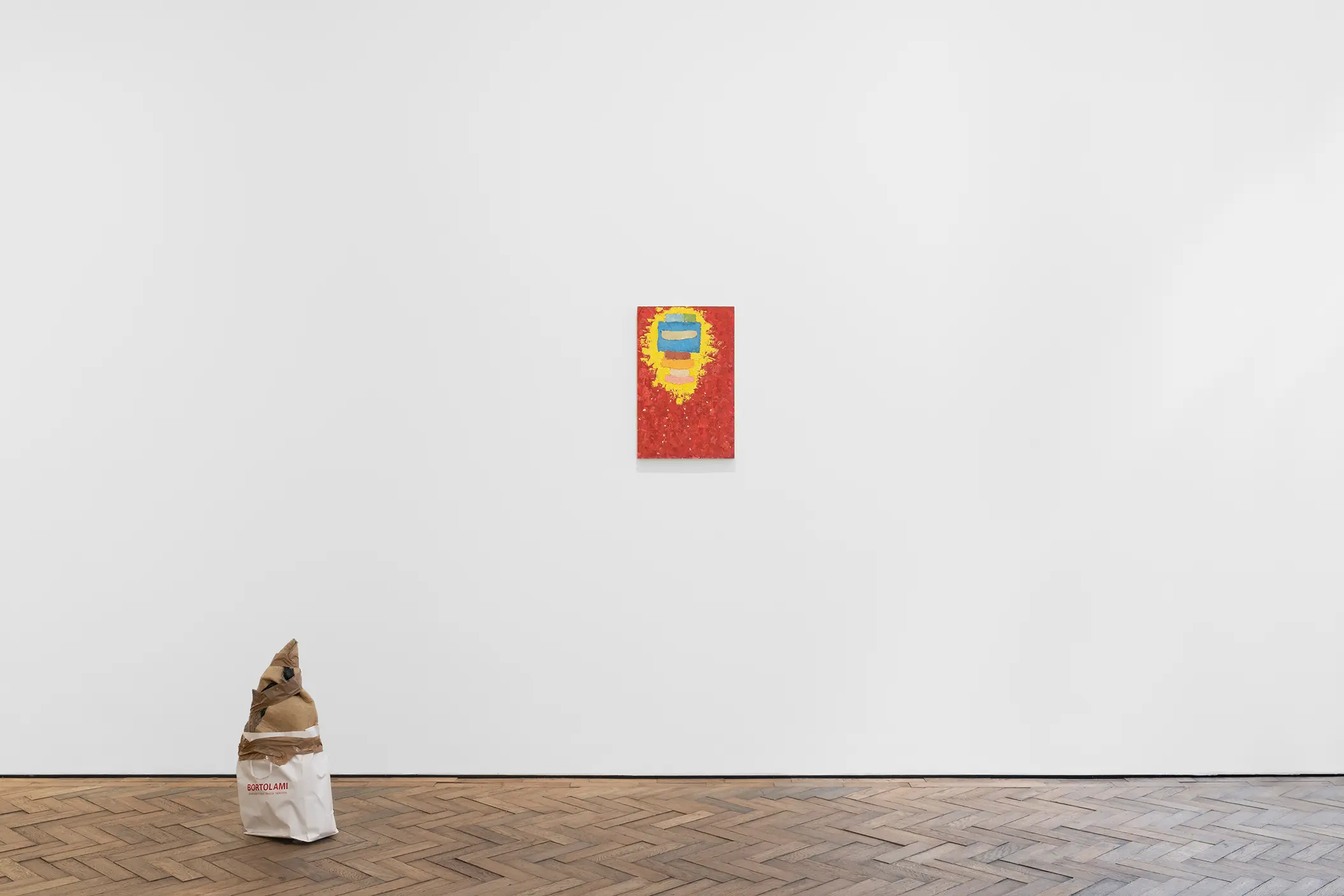
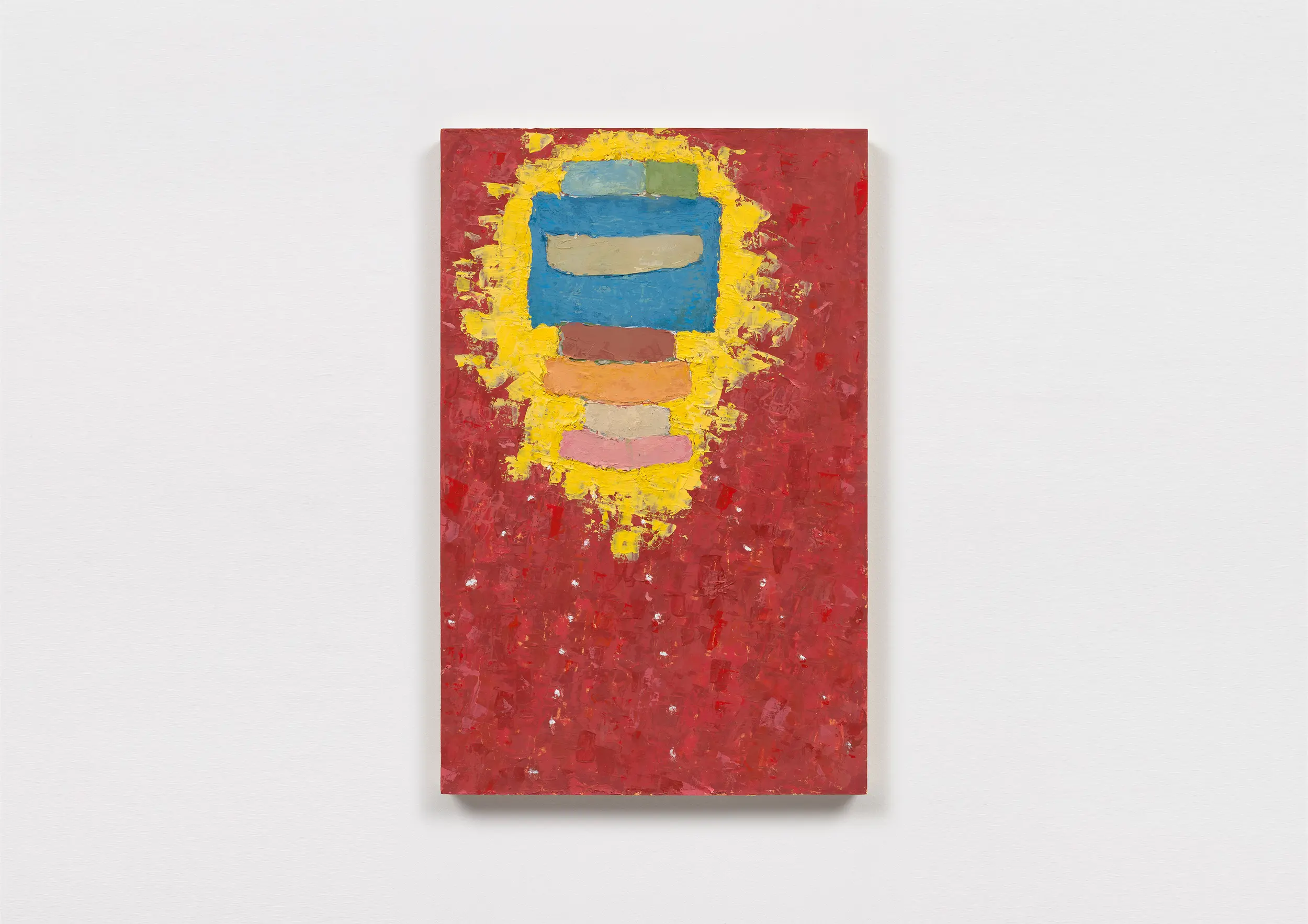
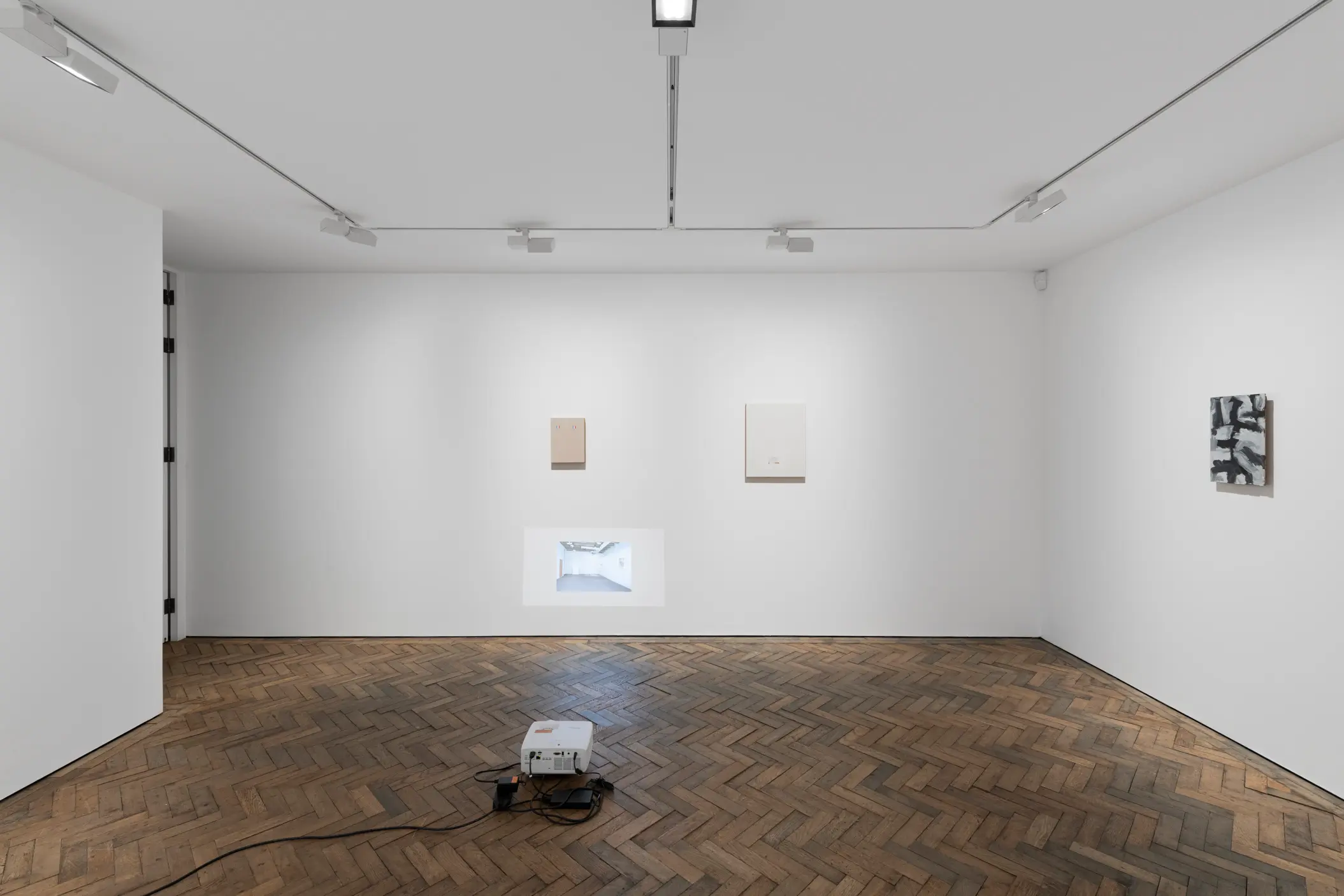
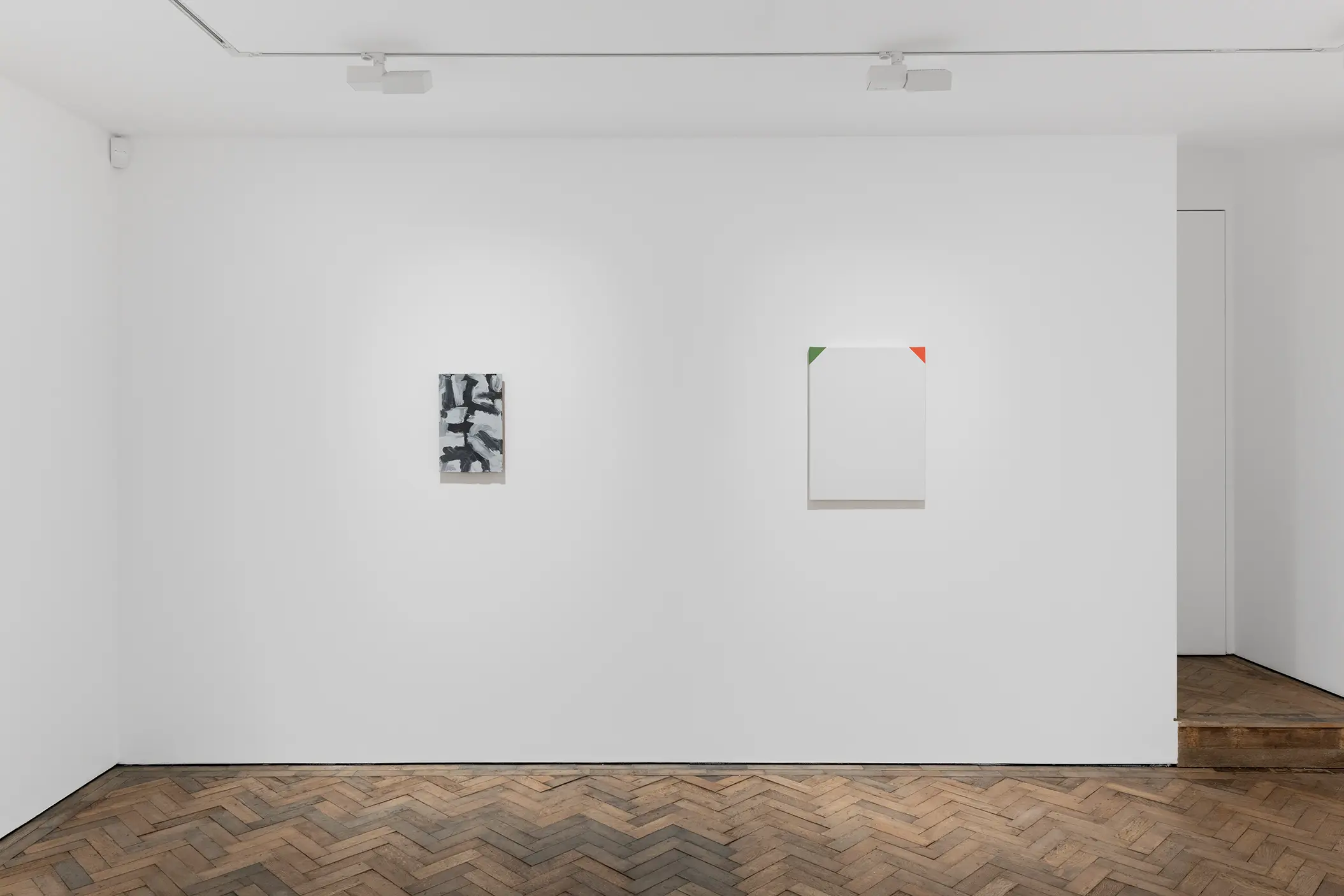
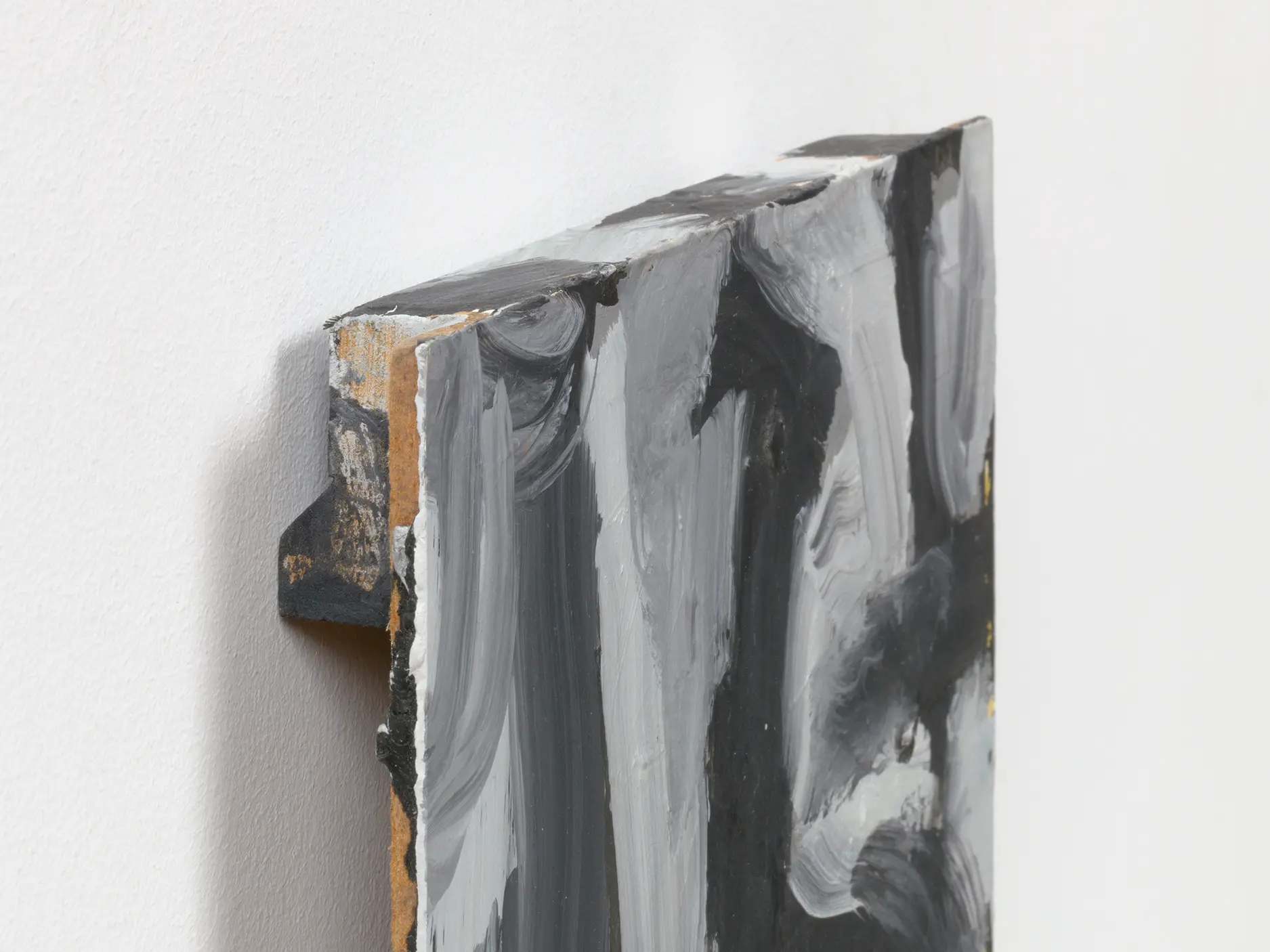
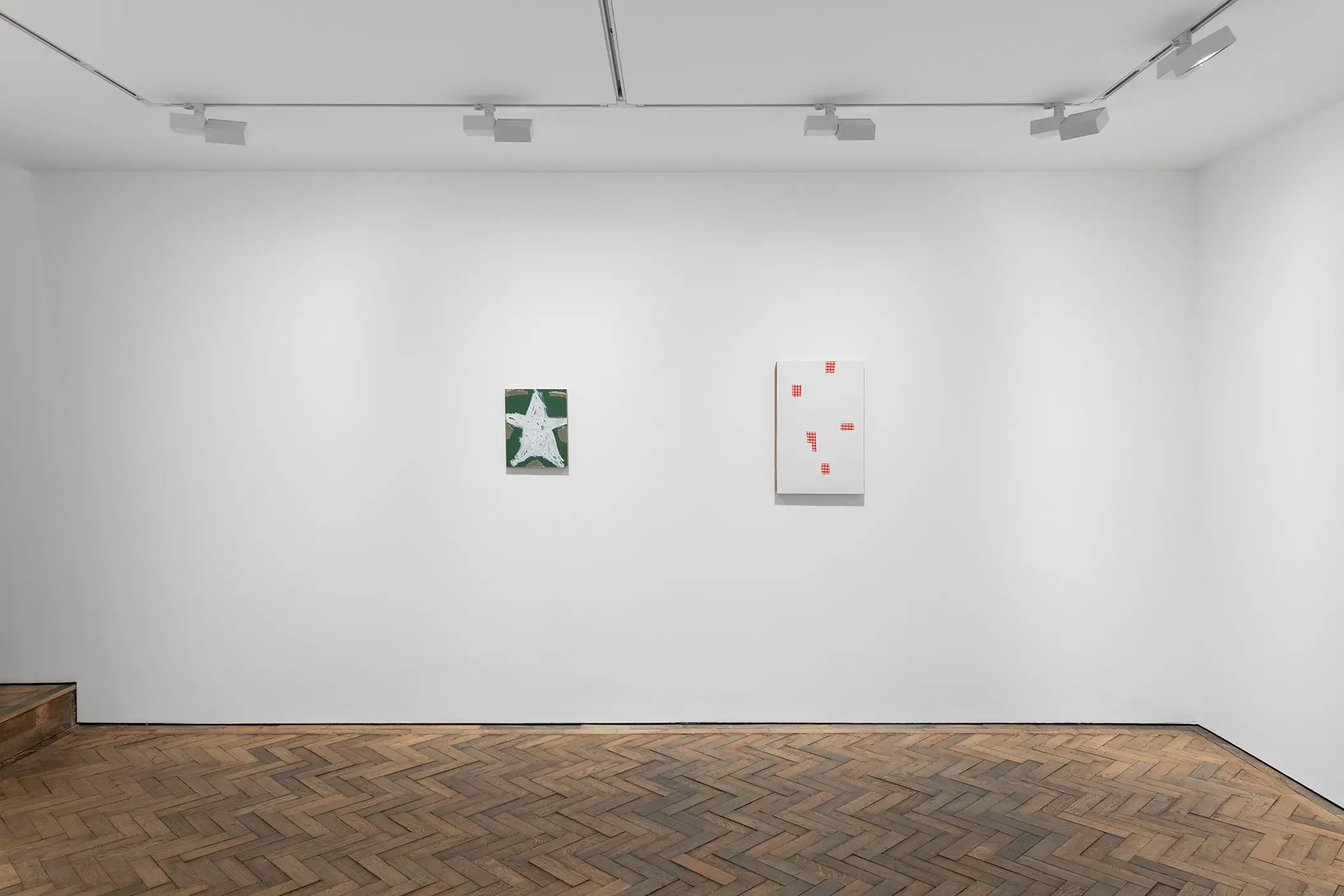
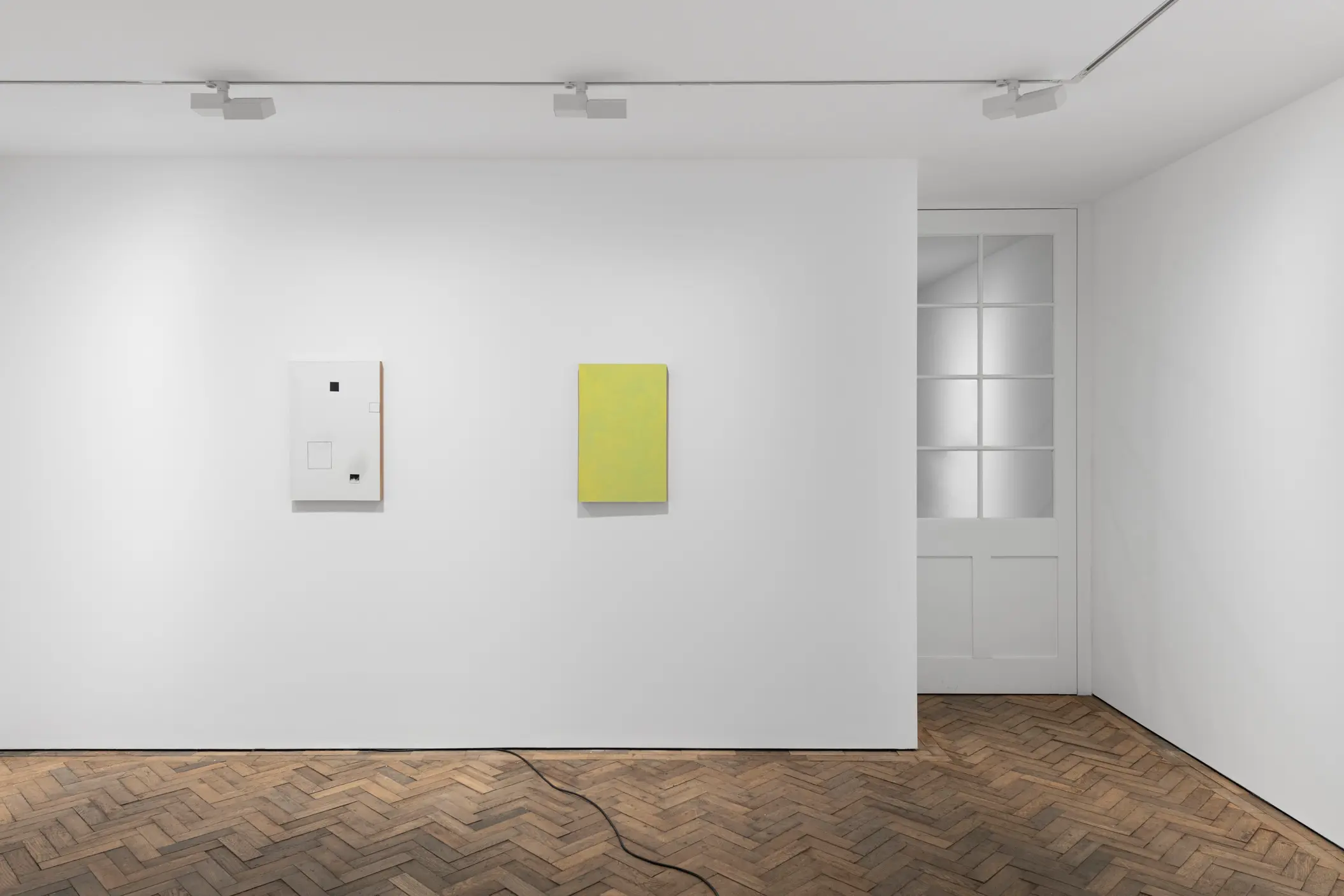
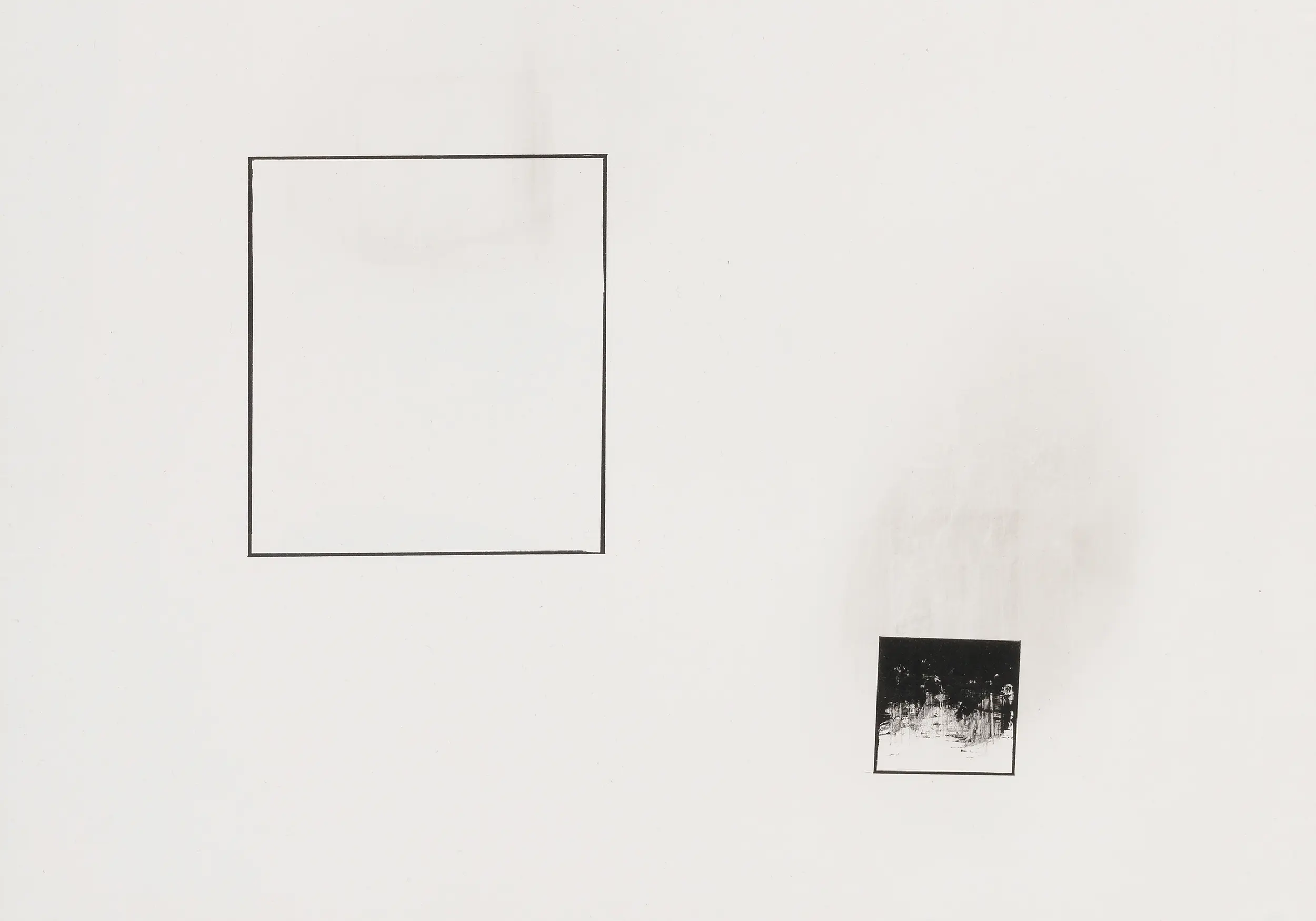
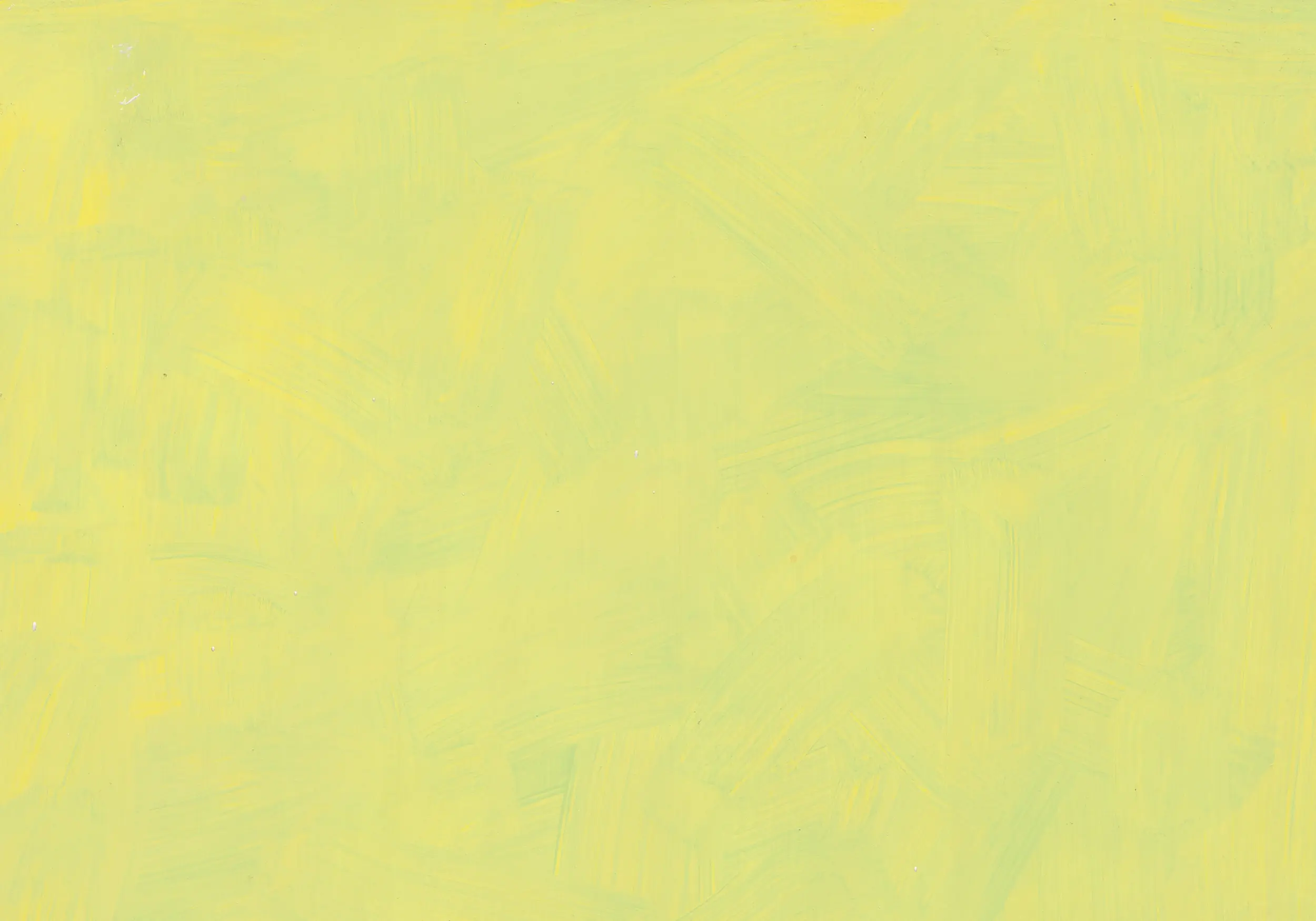
Bury Street
In the basement are a selection of older works, most from mid 2000s. I like them as a group of paintings, but they may not be particularly strong, and to an extent, as they were never shown, they are kind of rejects. But it’s interesting for me to see them as compared to the work I am making now. I can see what they were working towards – an experimentation with the object of the painting – and the conceptual impetus for each of their existence, but how does that relate to the art of today?
20 years feels not a long time, but I suppose it is, so to see how the art world has changed around me, and how I have changed as well, both as an artist, but also how I relate to the art world, seems typified in this larger gesture of showing these in the basement — then versus now.
The trash sculptures (which perhaps to be clarified require an “or” in between trash and sculpture) were started a few years back when I became self-conscious about throwing in the trash paint stained glass jars that could break and cut someone. So I began to wrap them in bubble wrap or plastic and then in paper bags. As a bit of background, when I was 15 I worked at a restaurant as a dishwasher and it was also my responsibility to take out the trash. Twice I cut my finger bad enough to require stitches because someone had thrown out a knife by just tossing it in the garbage. This uneasiness resurfaced and so these “sculptures” began. I liked them as objects born directly from anxiety — which certainly an argument could be made is a condition of all art — but in this instance there was a direct link between form and function, with zero regard for aesthetics. They seemed to me to be pure in this sense as they were made outside of any art discourse.
Long a characteristic of my work has been invisible connections between objects (“objects” being a broad understanding of such: artworks proper, texts, interviews, etc). Some are left open to be discovered, but sometimes it has become interesting to draw immediate attention to them. In this case, these two texts – both from 2006. One text describes a painting based on a digital Photoshop drawing and the other shows this digital Photoshop drawing.
This initially is what led to the group of works in the basement, which includes a painting that is similar to, but not the one described in the book. I like the potential confusion or misconnection that could occur: a slippage in the synaptic connection. What that can lead to, and how it can often still be productive or generative in some way, is always interesting – the tragedy/comedy dialectic is an inherent aspect of the human condition.
As someone whose own self identity used to somewhat be based on one who plays guitar and of which, to say the least, on a personal level, guitar solos and noise making was a primary means of expression, I find myself still using guitar players as subject matter.
One painting is an early letter from Syd Barrett to his then girlfriend at the time, when Pink Floyd first went to a recording studio. Important to note this was not their first album but recording a bunch of blues covers. There is an endearing innocence, particularly in light of what we know was to come for Syd and Pink Floyd. The other started as an homage or celebration of Sonny and Linda Sharrock’s second album Monkey Pockie Boo. The design of the text was a bad attempt at the Concrete poetry of Linda’s poem inside the double gatefold jacket.
I have done at least 100 artworks with Syd Barrett. I think it is his eyes — so expressive, and how they changed throughout his short career, reflecting so much about where he was emotionally and what was happening to him. And I have done probably 40 with Sonny Sharrock. He wanted to be a saxophone player but had asthma so had to play the guitar instead (though actually he started in a doo-wop group…). While I never wanted to play the saxophone, I did have asthma and know the feeling of it making decisions for you that you wouldn’t necessarily have wanted to make.
Helmet Row
I found this group of my old slides in a slide box, which in and of itself was not that odd — often I find collections in sheets or boxes, but generally it is not hard to deduce what I was thinking when I grouped them. But this set was very all over the place, including early sculptures from school in the mid 90s to a favourite small painting from 2004. Early on we realised a slide projector was not going to work in the gallery space. The image was just too washed out given the distance I wanted from the wall (and for a show that runs through June) so we switched to a digital projector. Though interestingly, I realised through the various attempts with different projectors that a big part of my interest in the slides was the sound it makes and how this would coexist with the Harry Pussy soundtrack. So this lead me to thinking maybe the best way to think about time and memory is with these different time schedules. Knowing that a digital projector can be programmed for whenever, in this case some of the images lasting for up to twenty minutes, versus the static 5 second viewing of the slides. Using both, particularly in two separate locations, felt like an interesting way to describe the non-linear way in which memories from the past exist. There was a past show that I did with the working title‘There is no such thing as time in the unconscious’. This, I think, is true.
Four Near Identical Figures comes from a mashing up of an iPhone-made digital collage, an image of an outfit of Shiv from Succession, some of my mother’s crafts hanging on a wall in my parents’ house, and other things! I often do not like making up compositions, so taking things from other sources helps with that and also determines colour so that I can focus more on just the painting.
Untitled comes from a previous painting that was on my normal size of 82 x 53 inches wide, but stretched out onto a 82 x 68 inch canvas. How do you expand that? How do expand anything? In this case I made some of the shapes larger and added some extra shapes. In the end it became more a cousin of the original rather then a conceptual process strategy, but that gesture was never meant to be an end, but rather a start.
Of late, I like to think of my work as more philosophical rather than conceptual, even though I imagine in the artworld both of these words have been rendered meaningless. How do we live our lives? How do we make decisions? What, in the end is important to us? What are our biases? When and how do we make judgements, be they positive or negative? I hope that my work embodies and makes crystalline the process of a more ephemeral/ethereal decision making. What is it to make a painting, what is it to show a painting? In a physical show, within a community of fellow artists, in the time of a hyper-commercialised market… What are the emotional relationships one has within this venture? Who plays such an integral role that you could not imagine doing it without them, who do you disdain, and who is just another in a throng of people that are around?
Press release
Bury Street
In the basement are a selection of older works, most from mid 2000s. I like them as a group of paintings, but they may not be particularly strong, and to an extent, as they were never shown, they are kind of rejects. But it’s interesting for me to see them as compared to the work I am making now. I can see what they were working towards – an experimentation with the object of the painting – and the conceptual impetus for each of their existence, but how does that relate to the art of today?
20 years feels not a long time, but I suppose it is, so to see how the art world has changed around me, and how I have changed as well, both as an artist, but also how I relate to the art world, seems typified in this larger gesture of showing these in the basement — then versus now.
The trash sculptures (which perhaps to be clarified require an “or” in between trash and sculpture) were started a few years back when I became self-conscious about throwing in the trash paint stained glass jars that could break and cut someone. So I began to wrap them in bubble wrap or plastic and then in paper bags. As a bit of background, when I was 15 I worked at a restaurant as a dishwasher and it was also my responsibility to take out the trash. Twice I cut my finger bad enough to require stitches because someone had thrown out a knife by just tossing it in the garbage. This uneasiness resurfaced and so these “sculptures” began. I liked them as objects born directly from anxiety — which certainly an argument could be made is a condition of all art — but in this instance there was a direct link between form and function, with zero regard for aesthetics. They seemed to me to be pure in this sense as they were made outside of any art discourse.
Long a characteristic of my work has been invisible connections between objects (“objects” being a broad understanding of such: artworks proper, texts, interviews, etc). Some are left open to be discovered, but sometimes it has become interesting to draw immediate attention to them. In this case, these two texts – both from 2006. One text describes a painting based on a digital Photoshop drawing and the other shows this digital Photoshop drawing.
This initially is what led to the group of works in the basement, which includes a painting that is similar to, but not the one described in the book. I like the potential confusion or misconnection that could occur: a slippage in the synaptic connection. What that can lead to, and how it can often still be productive or generative in some way, is always interesting – the tragedy/comedy dialectic is an inherent aspect of the human condition.
As someone whose own self identity used to somewhat be based on one who plays guitar and of which, to say the least, on a personal level, guitar solos and noise making was a primary means of expression, I find myself still using guitar players as subject matter.
One painting is an early letter from Syd Barrett to his then girlfriend at the time, when Pink Floyd first went to a recording studio. Important to note this was not their first album but recording a bunch of blues covers. There is an endearing innocence, particularly in light of what we know was to come for Syd and Pink Floyd. The other started as an homage or celebration of Sonny and Linda Sharrock’s second album Monkey Pockie Boo. The design of the text was a bad attempt at the Concrete poetry of Linda’s poem inside the double gatefold jacket.
I have done at least 100 artworks with Syd Barrett. I think it is his eyes — so expressive, and how they changed throughout his short career, reflecting so much about where he was emotionally and what was happening to him. And I have done probably 40 with Sonny Sharrock. He wanted to be a saxophone player but had asthma so had to play the guitar instead (though actually he started in a doo-wop group…). While I never wanted to play the saxophone, I did have asthma and know the feeling of it making decisions for you that you wouldn’t necessarily have wanted to make.
Helmet Row
I found this group of my old slides in a slide box, which in and of itself was not that odd — often I find collections in sheets or boxes, but generally it is not hard to deduce what I was thinking when I grouped them. But this set was very all over the place, including early sculptures from school in the mid 90s to a favourite small painting from 2004. Early on we realised a slide projector was not going to work in the gallery space. The image was just too washed out given the distance I wanted from the wall (and for a show that runs through June) so we switched to a digital projector. Though interestingly, I realised through the various attempts with different projectors that a big part of my interest in the slides was the sound it makes and how this would coexist with the Harry Pussy soundtrack. So this lead me to thinking maybe the best way to think about time and memory is with these different time schedules. Knowing that a digital projector can be programmed for whenever, in this case some of the images lasting for up to twenty minutes, versus the static 5 second viewing of the slides. Using both, particularly in two separate locations, felt like an interesting way to describe the non-linear way in which memories from the past exist. There was a past show that I did with the working title‘There is no such thing as time in the unconscious’. This, I think, is true.
Four Near Identical Figures comes from a mashing up of an iPhone-made digital collage, an image of an outfit of Shiv from Succession, some of my mother’s crafts hanging on a wall in my parents’ house, and other things! I often do not like making up compositions, so taking things from other sources helps with that and also determines colour so that I can focus more on just the painting.
Untitled comes from a previous painting that was on my normal size of 82 x 53 inches wide, but stretched out onto a 82 x 68 inch canvas. How do you expand that? How do expand anything? In this case I made some of the shapes larger and added some extra shapes. In the end it became more a cousin of the original rather then a conceptual process strategy, but that gesture was never meant to be an end, but rather a start.
Of late, I like to think of my work as more philosophical rather than conceptual, even though I imagine in the artworld both of these words have been rendered meaningless. How do we live our lives? How do we make decisions? What, in the end is important to us? What are our biases? When and how do we make judgements, be they positive or negative? I hope that my work embodies and makes crystalline the process of a more ephemeral/ethereal decision making. What is it to make a painting, what is it to show a painting? In a physical show, within a community of fellow artists, in the time of a hyper-commercialised market… What are the emotional relationships one has within this venture? Who plays such an integral role that you could not imagine doing it without them, who do you disdain, and who is just another in a throng of people that are around?